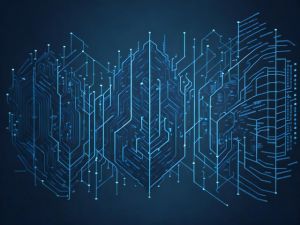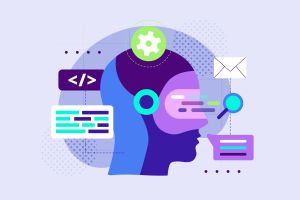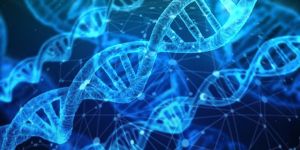The academic studies of the faculty members of our department and our four-year undergraduate curriculum include areas in artificial intelligence and data engineering that are popular today and will become increasingly important. Our students who start their undergraduate education will continue their education in areas such as machine learning, deep learning, natural language processing, big data analytics, etc. with compulsory and elective courses after acquiring a solid background with computer science and mathematics courses required by artificial intelligence and data engineering in line with our curriculum.
 |
Machine LearningMachine learning, a subfield of artificial intelligence, is the process by which computer-based systems train themselves to solve a problem even when they are not given the rules for that problem. These systems are models of algorithms, also called finite sequence of steps. Models can be used for many purposes such as diagnosing a disease in the field of health, detecting an abnormal flow in bank transactions in the field of finance, grouping users for user-oriented advertisements on social media, or making decisions for an autonomous vehicle. |
 |
Deep LearningDeep learning, a subfield of machine learning, is an approach that exemplifies the computational mechanisms of neurons in the brain and the way the connections between neurons work. The term “deep” comes from the fact that neurons are arranged in layers with multiple connections. Today, language translation, speech recognition or autonomous systems, which are much more powerful than in the past, use models created from deep learning algorithms. |
 |
Data MiningSufficient data on an area can be used to extract useful information about that area. Due to the large amount and irregularity of this data, it is difficult to extract this information with a superficial perspective. Data mining is a set of operations to extract information with mathematical approaches on this data. This data can be regular tabular data, or it can be text, audio or image data. For companies, conducting market analysis on data or identifying potential employee candidates in the existing database in the field of human resources are examples of data mining applications. |
 |
Natural Language ProcessingNatural language processing studies involve computer-based artificial systems that understand, interpret and generate content from natural languages spoken by humans, such as Turkish or English. As of the 2020s, natural language processing applications or simply language models that make people’s lives easier by establishing a dialog with people are increasing in popularity day by day. In addition to dialogue systems, applications such as language translation, sentiment analysis and text summarization are examples of natural language processing applications. |
 |
BioinformaticsBioinformatics is the use of computer science methods to develop solutions in the relevant field by using data in the field of biology. With bioinformatics applications, important studies can be carried out in areas such as health or genetics to increase the quality and duration of life of living things. The use and analysis of data in the diagnosis of genetic diseases or drug development are examples of bioinformatics studies. |
 |
Optimization AlgorithmsOptimization algorithms are algorithms that try to improve solutions to a problem over time. These algorithms work on the basis of swarm intelligence, evolutionary mechanisms or trajectory-based approaches. They can be used on all problems that adapt to the way algorithms work, from data engineering problems to other engineering problems. |
